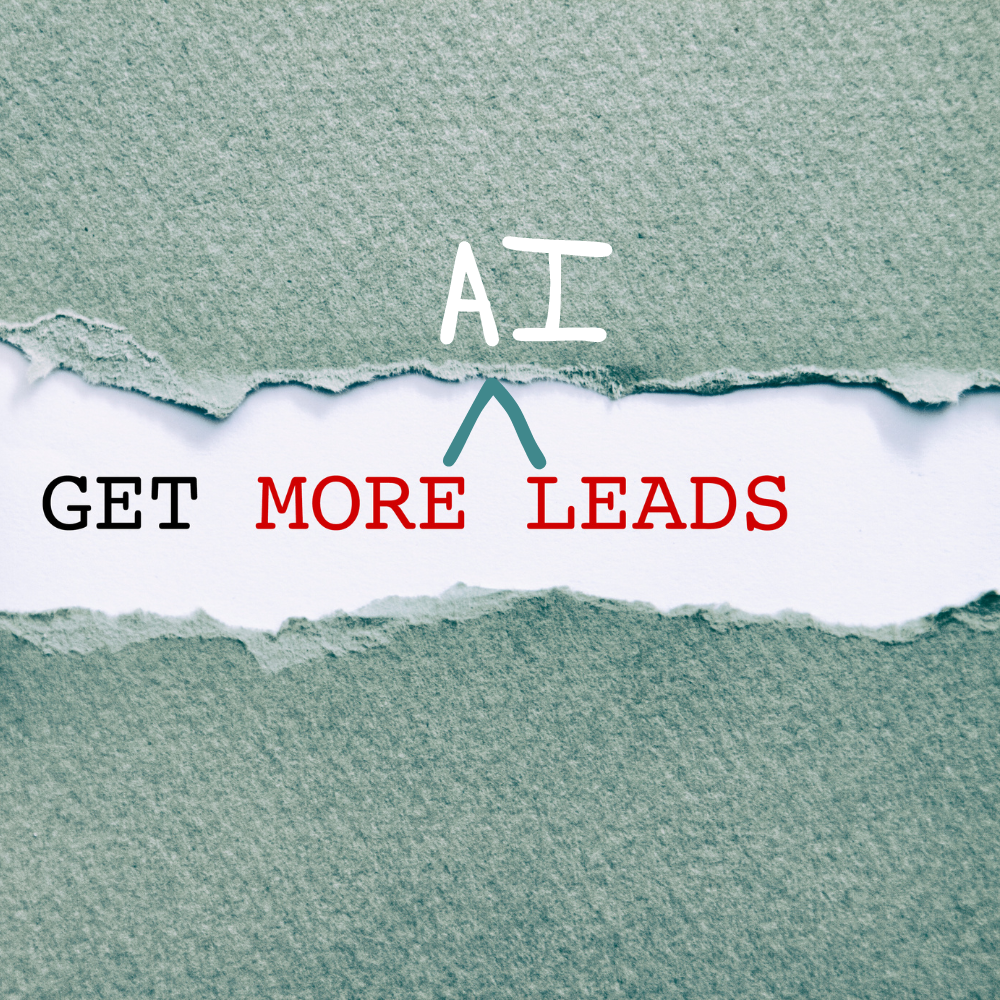As a small business owner, understanding your customers is crucial for success. With the advancements in AI technology, you can now gain valuable insights into your customers’ behaviors and preferences. In this article, we will explore the AI approach to understanding customers better and how it can benefit your business.
The AI approach to understanding customers better involves using artificial intelligence algorithms and machine learning techniques to analyze large amounts of data and extract meaningful patterns and insights. By leveraging AI, businesses can gain a deeper understanding of their customers’ needs, preferences, and behaviors, allowing them to tailor their marketing strategies and improve customer experiences.
In this article, we will delve into the various ways AI can help you understand your customers better, such as analyzing customer data, predicting customer behavior, personalizing marketing campaigns, and automating customer interactions. By the end of this article, you will have a clear understanding of how AI can revolutionize your approach to customer understanding and help you drive business growth. So, let’s dive in and explore the power of AI in understanding customers better.
- What is the AI Approach to Understanding Customers?
- Collect and Analyze Customer Data with AI
- Predict Future Customer Behaviors with AI
- Create Hyper-Personalized Marketing with AI-Driven Segmentation
- Optimize Marketing Spend with Artificial Intelligence
- Deploy Conversational AI Assistants | AI Chatbots
- Adopt AI Responsibly by Prioritizing Data Privacy and Fairness
- Understand Your Customers Better Today
What is the AI Approach to Understanding Customers?
The AI or artificial intelligence approach refers to leveraging artificial intelligence algorithms and machine learning techniques to analyze large volumes of customer data. AI extracts meaningful patterns and insights from this data that would not be visible to humans alone.
By harnessing AI, businesses can gain a much deeper understanding of their customers’ needs, preferences and behaviors. These AI-generated insights enable companies to tailor marketing strategies and improve customer experiences.
Consider this example of a small retail business that sells handmade jewelry online. In the past, they relied on basic customer data like purchase history and demographics. But they struggled to deeply understand buyer motivations and preferences.
The business decided to adopt an AI-powered customer analytics platform. This system applied machine learning algorithms to data from their website, email campaigns, social media, and more.
The AI analysis uncovered unique insights like:
- Customers who engaged with social content were 15% more likely to purchase
- Buyers who purchased gemstone pieces often return to buy matching earrings
- Customers responding to scarcity messaging had higher lifetime value
These AI-revealed patterns allowed the retailer to tailor promotions, product assortment, and shopping experiences. As a result, customer satisfaction increased by 22% and repeat purchases drove revenue growth.
Collect and Analyze Customer Data with AI
The key to understanding customers better starts with collecting relevant customer data. This includes demographic information, purchasing history, website activity, survey responses, social media engagement and more. Manually gathering and analyzing all this data is extremely difficult. AI-powered analytics tools can automatically compile, process and discern meaningful patterns in large volumes of customer data efficiently. Gain a 360-degree customer view and derive actionable insights with AI data analytics.
Look to aggregate your customer data within HubSpot to unlock AI-powered insights. HubSpot can seamlessly integrate data from all customer touchpoints including your CRM contacts, email marketing analytics, social media engagement, website activity, online ads, and more. The platform tracks customer journeys across channels and devices to build comprehensive profiles in one place.
With all your customer data unified in HubSpot, the built-in AI algorithms can rapidly uncover valuable insights not visible with manual analysis. The machine learning models will find hidden correlations across channels, predict future behaviors, and reveal underserved segments. These kinds of actionable insights inform strategic decisions and enable hyper-personalized marketing.
Leveraging HubSpot as your central data hub lays the foundation for an AI-driven approach to understanding customers on a deeper level. The integrated analytics and machine learning will help you continuously refine engagement strategies based on unique customer needs.
Predict Future Customer Behaviors with AI
Looking at past customer behaviors is useful, but even more valuable is using AI to predict future actions. Sophisticated machine learning algorithms can identify trends and make accurate forecasts of customer needs. AI predictive analytics provides small businesses the foresight to make smart marketing decisions. Get ahead of your competition by understanding what your customers want before they even ask.
AI evaluates large volumes of historical data to detect patterns. It determines which behaviors and attributes are associated with specific outcomes. Based on these insights, AI systems can forecast things like:
- Which customers are at risk of churning
- Which prospects are likely to convert
- Future spending habits and demand for certain products
- Responses to upcoming marketing campaigns
With AI predictions, you can proactively prevent customer loss, target high-value accounts, align inventory with expected demand, and optimize campaign success rates.
Create Hyper-Personalized Marketing with AI-Driven Segmentation
Today’s customers expect personalized brand experiences tailored to their individual needs. Manually creating personalized campaigns for each customer is unrealistic. AI empowers small businesses to efficiently segment customers into distinct groups based on common behaviors and attributes. Target each group with messaging and offers that align with their preferences for true one-to-one personalization.
For example, AI can segment customers based on:
– Purchase history – Identify big spenders vs. occasional buyers
– Engagement patterns – Group highly engaged vs. inactive users
– Demographics – Create segments by location, age, income
– Interests – Cluster users with shared preferences
Then, you can craft targeted email campaigns, web experiences, and promotions for each customer segment. Personalized content keeps customers engaged, boosts conversions, and nurtures brand loyalty.
Optimize Marketing Spend with Artificial Intelligence
For small businesses, marketing budgets are limited. AI can help optimize advertising spend by predicting the return on investment of campaigns. Machine learning evaluates massive amounts of data to determine which marketing strategies deliver results cost-effectively. Continuously improve marketing ROI by using AI insights to double down on what works and eliminate waste.
Let AI analyze the volumes of data from your campaigns – impressions, clicks, conversions, costs, engagement metrics, and more. The machine learning model finds correlations between campaign factors and outcomes. It determines the tactics and channels driving the highest ROI. Focus your budget on the campaigns, ad sets, keywords, and creatives generating sales.
Deploy Conversational AI Assistants | AI Chatbots
Chatbots and virtual assistants powered by AI are revolutionizing customer service. These bots can be programmed with natural language processing to understand questions and provide answers instantaneously. Set up a conversational AI assistant to handle common customer inquiries 24/7. This boosts engagement, improves satisfaction and frees up staff for high-value tasks. Deploy the human touch when needed by seamlessly escalating complex issues.
Today’s AI chatbots feel natural thanks to advances like contextual awareness and sentiment analysis. Users get quick, personalized responses rather than frustrating menus. Bots resolve common questions like order status, product details, account changes, returns, and more. Natural language generation enables detailed, conversational responses.
Seamlessly connect your AI assistant to internal systems to access customer data. Equip it with a knowledge base to answer frequently asked questions. Active learning means it keeps improving. Deliver instant, human-like experiences at scale.
The tool we are using right now is Chatbot Builder.
Adopt AI Responsibly by Prioritizing Data Privacy and Fairness
While AI unlocks powerful customer insights, it also introduces challenges around data privacy, transparency and bias. Small businesses aiming to adopt AI must address these issues responsibly. Make data security a priority by minimizing data collection, anonymizing customer information, and safely encrypting data.
Reduce bias by carefully selecting unbiased data sets and testing AI models. Leverage tools to increase algorithm transparency. Provide customers visibility into data collection practices and uses. Adopt AI thoughtfully, address risks, and maintain customer trust.
Understand Your Customers Better Today
Leveraging AI unlocks a deeper understanding of customer behaviors, needs and motivations. Small businesses that embrace AI-driven analytics, predictive insights, hyper-personalization, optimized marketing and conversational assistants gain a substantial competitive advantage.
With AI, unlock unprecedented customer intelligence to create marketing that resonates, strengthens loyalty and drives sustainable growth.
To learn more about harnessing the power of AI for your small business, schedule a strategy session with Inkyma today.
How can small businesses get started with using AI to understand customers?
There are three key steps small businesses should take to get started with an AI approach to understanding customers better:
1. Identify your goals. Define the specific customer insights you need to drive business growth, such as increasing retention, personalization, or campaign ROI. This focuses on the AI capabilities required.
2. Evaluate AI platforms. Research options that offer the analytics, predictions, integrations, and data security required for your goals. Shortlist solutions suited to your budget and resources.
3. Implement an AI pilot. Run a small-scale pilot program focused on a targeted use case like churn reduction or hyper-personalization. Measure results before expanding AI capabilities. Be sure to address algorithmic bias.



























